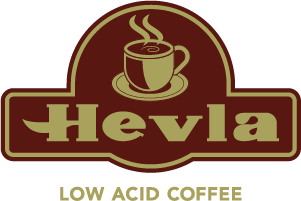What Doctors Don't Tell You About Gerd
Going to the doctor for having an upset stomach can easily turn into something much worse, such as acid reflux. Fact: about four million adults suffer varying degrees of acid reflux every year in the United States alone.
This staggering number of diagnoses come millions of unanswered questions about the nature of Acid Reflux disease and its progress. Most of the time, a simple diagnosis with a few pointers on what to avoid and a prescription for antacids would suffice the doctor's visit upon learning that a patient has Acid Reflux disease. Many physicians don't take the time to fully explain the pathophysiology behind acid reflux which can be helpful for patients, especially in accepting lifestyle choices associated with managing the disease. Further complication of Acid Reflux can lead to more serious conditions such as Gastroesophageal Reflux Disease or GERD. Getting the proper education when it comes to the proper management of how to treat and prevent the deterioration of organ tissue due to acid reflux.
GERD Explained
GERD is a common term associated with gastroesophageal reflux disease which is a progressive development of gastroesophageal reflux. A GER happens when the lower esophageal sphincter, responsible for protecting the esophagus from gastric acids loses its ability to constrict and spontaneously opens. It can also happen when the LES does not have the ability to close properly and the gastric acids in the stomach spew into the esophageal tissues. GER is the medical term for acid reflux, or also known as acid regurgitation. The digestive juices found in the stomach such as Pepsin and Hydrochloric acid is highly corrosive. The LES or lower esophageal sphincter is a ring-like structure of muscular tissue that serves as a valve, which provides an opening for the esophageal tube into the stomach to mobilize food from the mouth into the stomach.
During acid reflux, food that has already been semi-digested in the stomach regurgitates back into the throat and all the way to the buccal cavity. This is the reason why when someone is experiencing reflux they can taste the food that they have already consumed hours before in their mouth. As the digestive acids brush up on the esophageal lining, it creates a burning sensation which causes localized pain, normally felt in the upper thoracic area. This is called a heartburn or acid indigestion. People who suffer from heartburn normally complain of a seething pain in the upper chest or near the throat. If the gastric reflux occurs more than twice in five days it is diagnosed as a disease. GERD can be diagnosed in any age, ethnicity and sex.
Frequent episodes of heartburn are one of the main symptoms of GERD in many adults. This is characterized as a burning sensation in the posterior and midline of the chest right behind the sternum, protracting to the epigastric area. Heartburn seems to occur less in children, with most who suffer from GERD not having a heartburn onset. Children normally experience associated symptoms such as dry cough, asthmatic tendencies and primarily difficulty in swallowing.
Causes of GERD
With so many clinical trials and medical research spent on the study of GERD, its pathophysiological cause is still undetermined. It has been established however that the LES is a primary problem area in almost all cases of GERD, where the LES loses its functional use while the rest of the esophageal structures remain purposeful. The development of anatomical anomalies, such as a hernia can also lead to the development of GERD. When the upper part of the stomach muscle and LES contract above the diaphragm, the musculature separates the stomach from the chest which is what causes a hiatal hernia.
Research has shown that a hiatal hernia promotes the development of GERD because of the diaphragmatic obstruction. A hiatal hernia is difficult to detect as it mostly does not exhibit any symptoms. Other predisposing factors can lead to the development of GERD. In women, obesity and pregnancy are attributed as a causative factor for GERD while all smokers have a certain predisposition to GERD.
When it comes to managing the symptoms of GERD it is important to follow a strict diet that avoids foods that may worsen the reflux altogether. Foods with high acidity are normally discouraged for people diagnosed with GERD because the acidity in the food can add to the corrosiveness of the gastric acids already present in the stomach. Citrusy fruits, chocolate, alcoholic drinks, garlic, tomato based condiments and sauces as well as spicy food in general is to be avoided to minimize reflux onset. One of the most important things that you can do for yourself, which your doctor doesn't tell you much of, is how lifestyle changes can dramatically alter the amount of reflux episodes you have.
Changing your eating habits (such as consuming low acid food and beverages) as well as your nutritional intake can make your GERD manageable to a point of ease. Many coffee lovers who have GERD have to give up coffee because of it acidic nature have found Hevla’s low acid coffee a saving grace.

